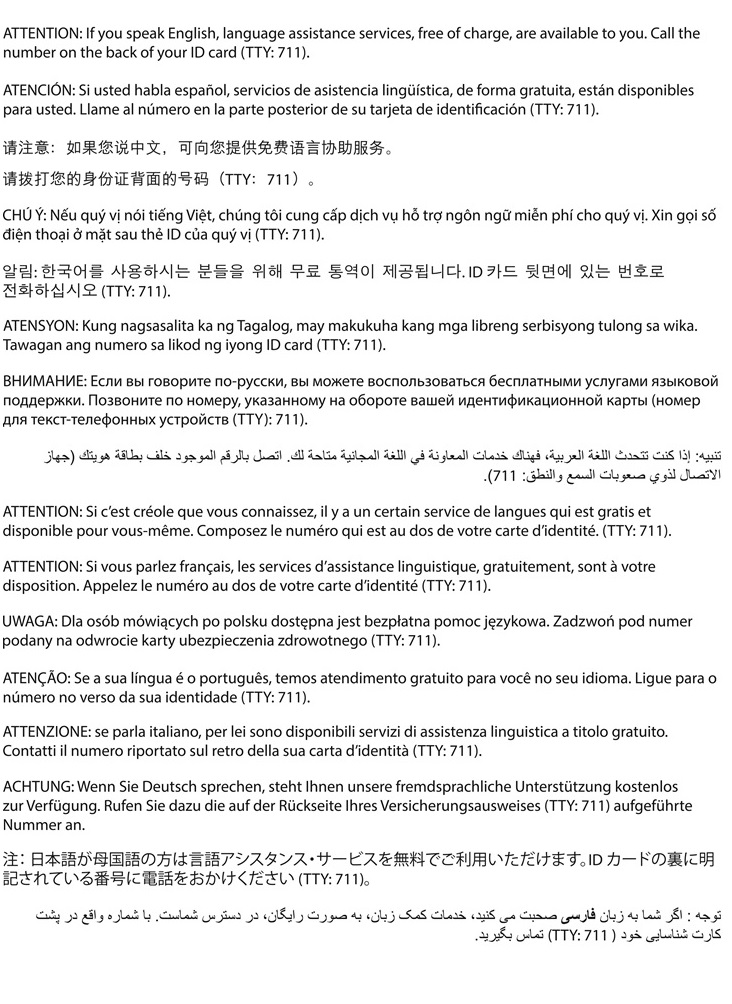| Highmark Commercial Medical Policy - Pennsylvania |
| Medical Policy: | L-201-002 |
| Topic: | BCR-ABL Negative Myeloproliferative Neoplasm Testing |
| Section: | Laboratory |
| Effective Date: | November 13, 2017 |
| Issue Date: | November 13, 2017 |
| Last Reviewed: | March 2017 |
Primary myelofibrosis (PMF), polycythemia vera (PV) and essential thrombocythemia (ET) are a group of heterogeneous disorders of the hematopoietic system collectively known as Philadelphia chromosome-negative MPN. The diagnosis and management of patients with MPN has evolved since the identification of mutations that activate the JAK pathway (JAK2, CALR, and MPL). The development of targeted therapies has resulted in significant improvements in disease-related symptoms and quality of life. JAK2 V617F mutations account for the majority of patients with PV (greater than 90%), ET or MF (60%). Most of the mutations occur in exon 14 with rare insertions/deletions in exon 12. JAK2 exon 12 mutations have been seen in approximately 2-3% of patients with PV. MPL mutations have been reported in 5-8% of patients with MF and 1- 4% of patients with ET. MPL mutations are associated with lower hemoglobin levels at diagnosis and increased risk of transfusion dependence in patients with MF. CALR mutations are reported in approximately 20-35% of patients with ET and MF (accounting for approximately 60-80% of patients with JAK2/MPL-negative ET and MF). CALR deletion mutations are more commonly seen in patients with MF and are associated with a significantly higher risk of myelofibrosis transformation in ET. CALR insertion mutations are associated with ET, low risk of thrombosis and an indolent course. CALR mutations are associated with a lower hemoglobin level, lower WBC count, higher platelet count and lower incidence of thrombosis than the JAK2 V617F mutation. |
This policy is designed to address medical guidelines that are appropriate for the majority of individuals with a particular disease, illness, or condition. Each person's unique clinical circumstances may warrant individual consideration, based on review of applicable medical records.
| Policy Position Coverage is subject to the specific terms of the member’s benefit plan. |
JAK2 V617F mutation analysis may be considered medically necessary when the following criteria have been met:
JAK2 Exon 12 analysis may be considered medically necessary when the following criteria have been met:
CALR Exon 9 and MPL mutation analysis may be considered medically necessary when the following criteria have been met:
Analysis of ASXL1, EZH2, TET2, IDH1, IDH2, SRSF2, and/or SF3B1 may be considered medically necessary when the following criteria have been met:
| Professional Statements and Societal Positions |
Guidelines and Evidence The World Health Organization (WHO, 2016) has established diagnostic criteria for PMF, PV, and ET.
*In the absence of ANY of the 3 major clonal mutations, the search for the most frequent accompanying mutations (e.g., ASXL1, EZH2, TET2, IDH1, IDH2, SRSF2, SF3B1) are of help in determining the clonal nature of the disease.
**Criterion number 2 (BM biopsy) may not be required in cases with sustained absolute erythrocytosis; hemoglobin levels greater than 18.5 g/dL in men (hematocrit, 55.5%) or greater than 16.5 g/dL in women (hematocrit, 49.5%) if major criterion 3 and the minor criterion are present. However, initial myelofibrosis (present in up to 20% of patients) can only be detected by performing a BM biopsy; this finding may predict a more rapid progression to overt myelofibrosis (post-PV MF). The National Comprehensive Cancer Network (NCCN, 2017) evidence and consensus-based guidelines recommend the following initial laboratory evaluations for individuals suspected to have MPN:
|
| Place of Service: Outpatient |
BCR-ABL negative myeloproliferative neoplasm testing is typically an outpatient procedure which is only eligible for coverage as an inpatient procedure in special circumstances, including, but not limited to, the presence of a co-morbid condition that would require monitoring in a more controlled environment such as the inpatient setting.
| The policy position applies to all commercial lines of business |
| Denial Statements |
Services that do not meet the criteria of this policy will not be considered medically necessary. A network provider cannot bill the member for the denied service unless: (a) the provider has given advance written notice, informing the member that the service may be deemed not medically necessary; (b) the member is provided with an estimate of the cost; and (c) the member agrees in writing to assume financial responsibility in advance of receiving the service. The signed agreement must be maintained in the provider’s records.
| Links |
05/2017, REMINDER: Molecular and Genomic Testing
